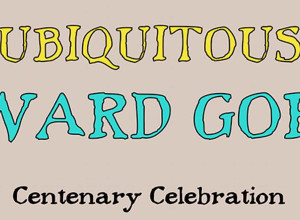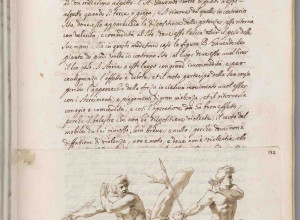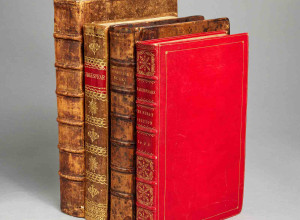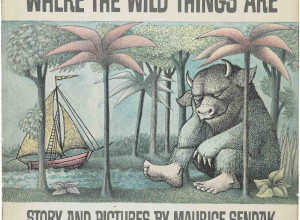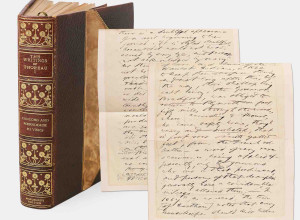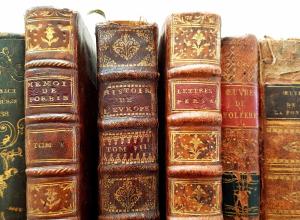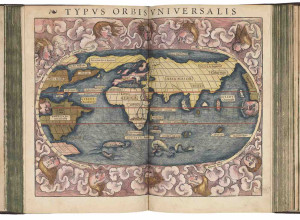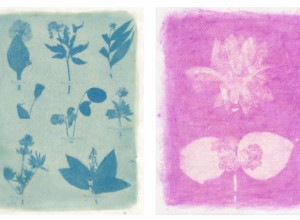Bright Young Booksellers: Miranda Garno Nesler

Our Bright Young Booksellers series continues today with Miranda Garno Nesler, Director of Women's Literature and History at Whitmore Rare Books in Pasadena. [Proprietor Dan Whitmore was himself an entry in our Bright Young Booksellers series back in 2011 when he was just getting started. Read that interview in our archive here.]
How did you get started in rare books?
At 15, I decided I would be a professor of Renaissance literature. I had just read Macbeth, and after getting an opportunity to see a first quarto, I couldn’t imagine a life better than handling books I loved. I pursued that goal single-mindedly. By my mid-20s I had my PhD from Vanderbilt University. My expertise was working in special collections, tracing how women engaged with and shaped 17th century literature; I studied their manuscripts and diaries, their embroidery, their annotations in books, the catalogues of their libraries or their household budgets and receipts. At 30, though, I was being pushed toward early tenure at a university more focused on teaching than research; and I felt dissatisfied by the future academia offered. So, I resigned and decided to build a life that did fit. I left to California, becoming a specialist for a private women’s history collection for a couple of years; from there to the Sotheby’s Institute, where I taught collection development management, and then I attended CABS (Colorado Antiquarian Book Seminar). While at CABS, several faculty suggested that I should reach out to an alum, Dan Whitmore, whose shop was just down the street from my apartment.
What is your role at Whitmore Rare Books?
As the Director of Women’s Literature and History and the head liaison to institutional clientele, my shop identities dove-tail in really natural and effective ways. My first priority is developing inventory that represents a wider range of human contributions to the world. To that end I’m drawing in rare material on women’s work in medicine, science, philosophy, social activism, literature, and art; and I’m working to ensure that the category “women” is inclusive (which means I want works by queer, indigenous, Latin American, Asian American, and African American women in our inventory as well). Part of this is driven by a commitment to clients seeing themselves reflected on the shelves, and seeing their history being valued. Part of this is also driven by my commitment to assisting libraries in the same goal. I would say 95% of my work is with librarians, faculty, and curators who need research rich and first edition material that can make teaching, research and exhibitions about women possible.
What do you love about the book trade?
How do I count the ways I love this trade? It gives me everything I wanted and is the dream career I didn’t even know to dream about! Right at the top – the opportunity every single day to work with rare material. Whether it’s a title I know well or haven’t encountered before, every physical book presents a learning opportunity. There may be unique signs of use, variants in printing or binding, or context that make the book unique. I’m never bored by it. This is, honestly, something I expected when I shifted to the trade; it was a big part of the appeal. What I didn’t anticipate fully was what a generous, funny, dedicated, and brilliant community I’d be joining. My colleagues are some of my most important mentors and some of my closest friends. They push me to be better at what I do.
Favorite rare book (or ephemera) that you’ve handled?
People sometimes think I exaggerate when I say “everything in the shop” – but it really is true. We have a rate of 1500:1 for pulling pieces into inventory; so if it’s here, there’s something remarkable about it, and I’ve had the chance to intimately learn what makes it special.
That said, there are two moments that really stand out. One was The Declaration of Rights of the Women of the United States (1876) – a bit of a black tulip for me personally, and something I never thought I’d get a chance to see or handle. As it turns out, it was the first thing we acquired for our women’s history collection. The second was from a few years ago: a first edition in English of Descartes’ Passions of the Soule (1650). On the front pastedown it had the contemporary ownership signature of a woman, Rachel Seede, and several of her annotations throughout. For me and for the client who took it, this was a major part of the book’s value: evidence that a 17th century English woman was engaging with important philosophical works when they became available in her language. It was a reminder that in this position, I’m pursuing the same questions and finding value in the same material that started my career.
What do you personally collect?
In the shop, we have an agreement not to collect books on a personal basis. So while all my book-hunting tendencies go to WRB, I’m free to manage another very different collection (one which comes as no surprise to anyone who has met me!): shoes. I seek them out with purpose. I maintain them with care. Every pair serves some role for me. Sometimes they’re related to important moments in my life. I love them as aesthetic, and practical, historical and artistic objects. I love them as self-expression. Some of the shoes in my closet are, yes actually, insured. Regardless of value, I wear them with aplomb and the belief that every day in a life should be good enough for good shoes.
What do you like to do outside of work?
I’m split between craving cerebral and corporeal experiences. Sneaking away to a movie on a weeknight when no one is in the theatre, or taking a good book to a quiet bar for happy hour are favorites. Then again, I love getting out of my own head. I’m a member of a local boxing club, where I train a couple nights a week; it’s a great way of focusing on nothing but the physical moment you’re in. In the end, though, most evenings end at home, with my dog Brontë by my side while I stir up martinis and make dinner with friends.
Thoughts on the present state and/or future of the rare book trade?
Watching Millennials enter the field is an incredibly exciting thing. Whether they’re approaching rare books as curators, new collectors, or members of the trade, they’re reshaping the market. Their relationship with books is touched by an activist spirit. When they look at a catalogue or a shelf, they want to see a diversity of identities reflected there; and I think that’s helping draw new attention to books by LGBTQ+ writers, authors of color, and women.
Any upcoming fairs or catalogues?
Always! It’s a robust calendar. We do a full cycle of 8-10 fairs annually, beginning with California in February and ending with Boston in November. In June, I also participate in RBMS (Rare Book and Manuscript Section) as a dealer in the showcase or as a panelist.
Catalogues follow a similar schedule. In the spring and fall, we do our numbered shop catalogues, which highlight the most exceptional pieces of our inventory. We’ve begun doing a holiday gift catalogue in December. And once a year, as my pet project, I do a diversity catalogue. In 2018 (In Pursuit of Equality) and 2019 (By Her Own Hand) these focused on women’s movements in the U.S. and U.K. In coming years, I’m hoping to expand the number and kinds of communities represented.





